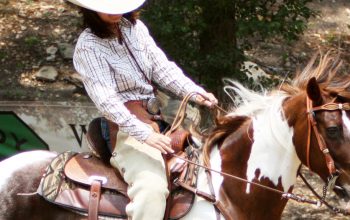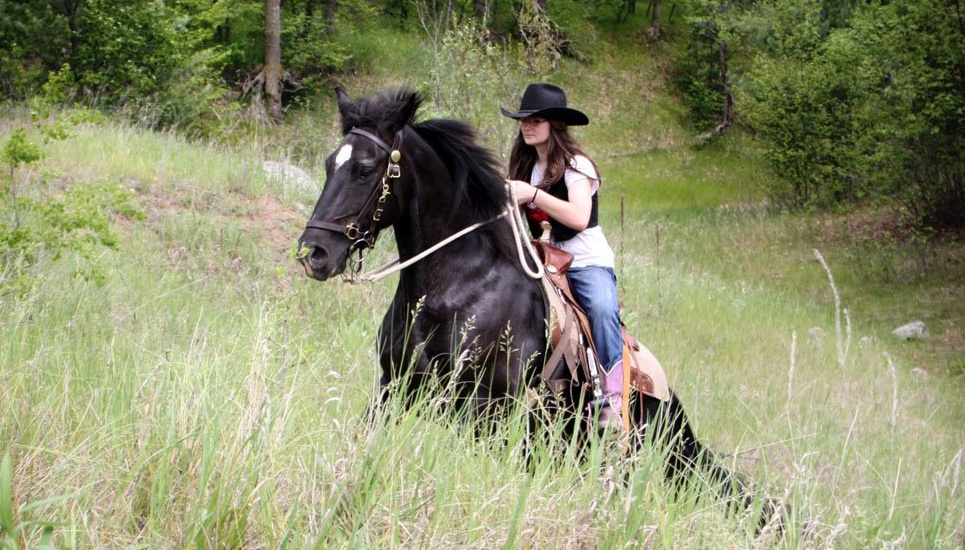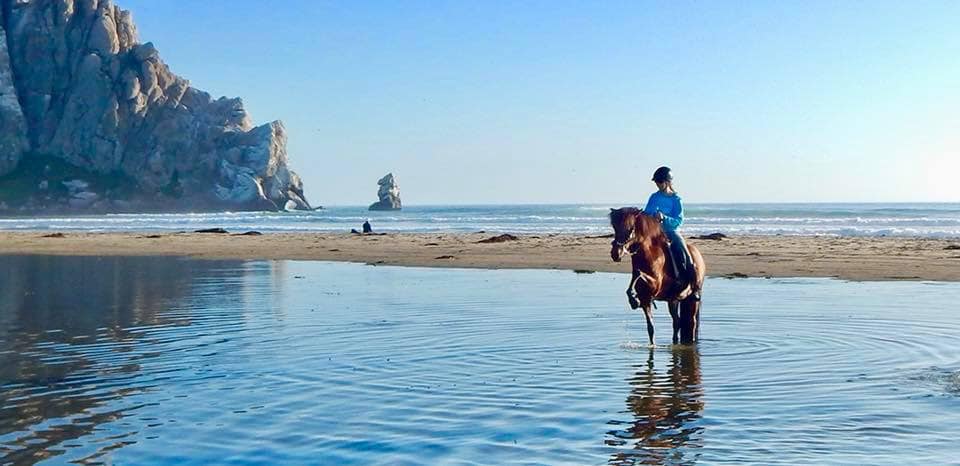Journey’s End Horses
Devoted to breeding outstanding National Foundation & American Quarter Horses
By Beth Ferguson, West Fork, AR

There are times in your life when you just know what you’re meant to do. As the 2020 foaling season at Journeys End came to a close, I couldn’t help but reflect on my own personal journey.
When I was a toddler in California I would squeal in my car seat going down the road. My mother realized it was horses that were causing such a stir in her back seat. Living in the city, I had never been around horses and no one in my family had exposed me to the deep connection that eventually overcomes you once bitten by the “horse bug”. I wasn’t much older when my mother humored my obsession and took us all on a rented trail ride. I was still extremely small as I sat in the front of the saddle with her. She said I was at home in the saddle and was peacefully asleep with the gentle sway as we walked single file down the trail.

As life had it we moved to what I now call home, Arkansas. Horses were everywhere but it just wasn’t our lifestyle. At 6 years old I packed my little suitcase and proceeded to the door. My mother chuckled and asked where I was going. I told her, “I’m going to find a family who has horses”. My mother made that little girl a promise that she would make sure I would have horses one day.
Journeys End was built by Beth Ferguson, a woman fueled with a passion for good horses. The journey will continue on when her daughter Brooke takes the reins.
As I grew older and continued my journey, I worked milking goats and cared for a neighbors farm that included horses. That progressed into another farm, and another. It was my dream to go back to a particular farm I worked and lived at to buy one of the foals. He was stunning!!! The who’s who on his papers and built like he stepped off the pages of a magazine. I had not ran across a horse I couldn’t break before that. But, I woke up in the hospital having had emergency surgery. Yes, the dream came to an abrupt halt. I didn’t ride for a few years after that and honestly have never rode the same. My confidence was shattered. A couple more years passed and I was given an amazing, young colt, which I still have to this day. From 5 months old I raised him. I knew him, how he reacted to fear, and what his triggers were.


My mother helped me get another horse to call my place home. She was a pure delight and then to my surprise, she foaled!! So, I went from raising a weanling to being hands on from the day they came into this world. It was that mare in which I found my calling. By weaning age that foal would jump in the trailer and go over any obstacle. He truly trusted humans. I started gathering a small band of brood mares that had the blood lines that would/could work but also had an appeal to the eye. After my experience with the horse that hurt me, I quickly culled a mare if she did not check all the boxes. They can have all the names that make you go wow and looks that will knock your socks off. But on the other side of that, if they don’t have the mind…you don’t have anything. I’ve been through several breeds over the years, learning about the good and the bad. I worked for farms that traveled showing champion gaited horses across the southern U.S., World Champion Appaloosas and Paints as well. For me, I found the breed most steady, never wavering, kind, beautiful, incredibly intelligent and so in tune with their human, was none other than the American Quarter Horse!
It takes years to be a proven mare at Journeys End. Before ever being bred you must “prove” who you are and if you are worthy of continuing your breed. Are you contributing to the betterment and preservation of the best of the best? They can be show ring bound, but, if you can’t trust them around your children then they aren’t worth the grass they are eating at my house or a good ambassador of their breed.
“Just like all breeds, you have to be selective and just because they can breed, doesn’t mean they should. “
I stopped raising my own bloodlines for several years when the horse community started to struggle with the closing of the slaughter plants. I retained all of my mares and stallions but chose not to breed them. I would hand pick horses that needed to be rehabbed physically, mentally, and would retrain them to be productive “wanted” citizens. I came to the realization of a few things. The 2 main points, without getting in to an unpleasant topic, 1) if a mare does not get adequate nutrition during gestation, and/or a foal during the early formative years, it has a detrimental impact on the rest of their life. Not just externally but internally as well, and 2) imprinting goes beyond desensitization. It will be a road map for how they view humans as friend or foe their entire life.

Photo above: On the left, Dry Doc Badgered Me aka Blue was also born many years ago at Journeys End. He has saved Ferguson’s life more than once when a underground cavern gave way in a river bed almost drowning the two, and a bank collapsing after severe flooding in the area. He has carried her to safety and through two back surgeries. His contribution has been priceless. He carries the heart and grit that has made these horses so popular among advanced riders. The gelding on the right, Starberts Peppy Lynx aka Draego, was out of the 2015 foal crop retained by Ferguson for her next saddle horse. He has carried her daughter, Brooke, many miles in the mountains of Northwest Arkansas.
It became evident that the quality of horses to be found was dwindling rapidly and the preservation of specific bloodlines in the next 10 years will be something you can only read about in an article. I would like to think I’m in my prime years, but I look at the foals running and playing, and I dream of who they will be. In 20 years I’ll be past retirement age and my daughter will have the reins along with children of her own. These magnificent animals I have been entrusted with will live on through their offspring, with hopes they will think of me as the foaling seasons come and go.

Photo above: Blue (left) with Brooke and ’20 Spring filly, Aurora. Aurora is going to shed off vivid blue, she will be double registered AQHA & NFQHA, name is pending, “Journeys Aurora Blue” (barn name Aurora). See her full sister in the image below.

Appendix, Foundation and AQHA
The foals who once frolicked in our pastures will one day bring joy to families, a key tool for a rancher or a critical team mate for that fierce competitor. For those reasons choosing Quarter Horses (high percentage Foundation) was not by chance. We have a few that are not Foundation eligible. I have to admit, I like a little fire under my saddle and a little running blood (good minds but with a lot of speed). The American Quarter Horse Association has only allowed thoroughbreds to be considered to be eligible when breeding since it was created in the 40’s. If you have too much thoroughbred blood they will have “special” papers and are referred to as Appendix bred. On the other hand, the National Foundation Quarter Horse Association was founded strictly for the preservation of the original bulldog type horses. To quote them directly, “They not only looked alike ~ but they did it all ~ there were no specialty horses.” The foundation percentage is based on how “pure” the bloodlines are. A 100% foundation horse will not have any thoroughbred in it’s lineage for a minimum of 11 generations. The preservation of bloodlines, amazing athletic ability, color, conformation, usability, intelligence and willingness to work is where my journey continues to take me. Wherever your journey takes you, I hope we meet on the trail one day and keep riding until this beautiful journey ends.
Contact Beth at Journey’s End on Facebook: www.facebook.com/journeysendhorses




